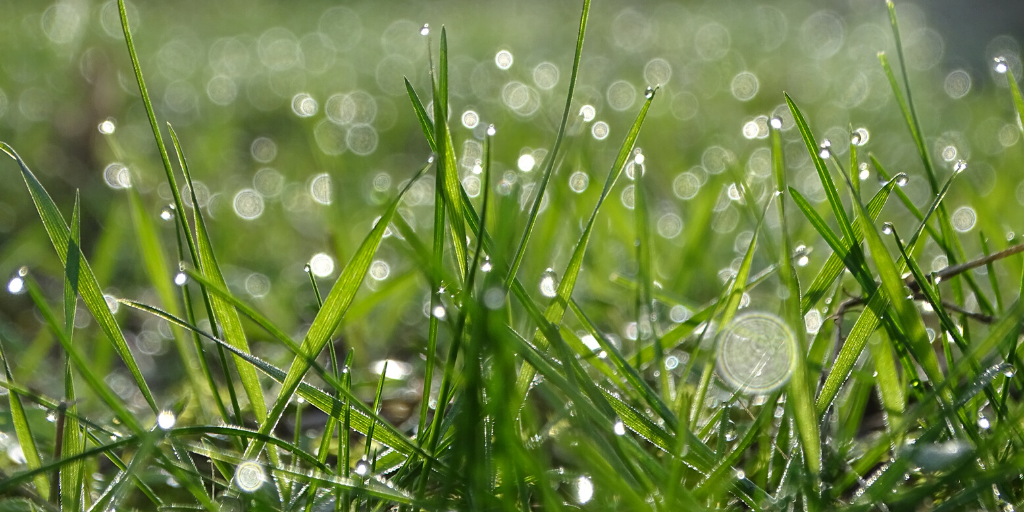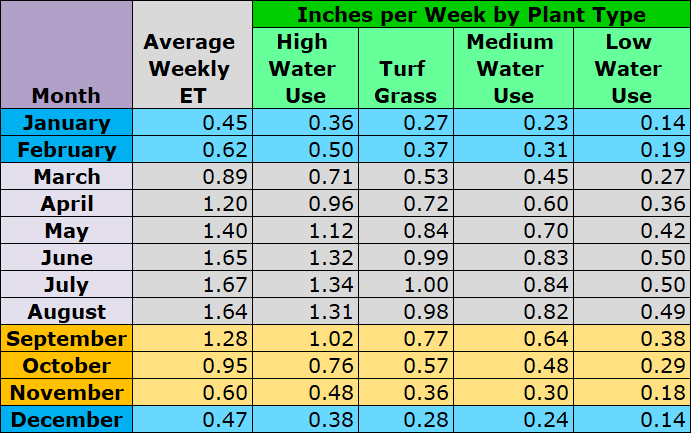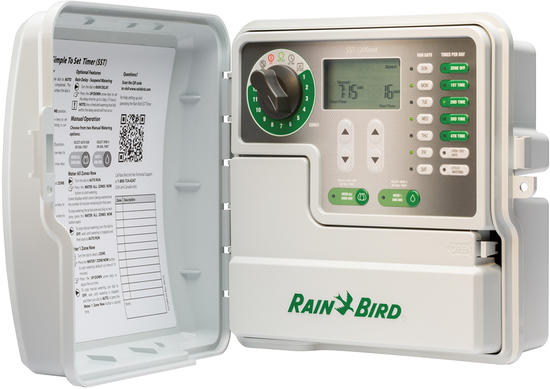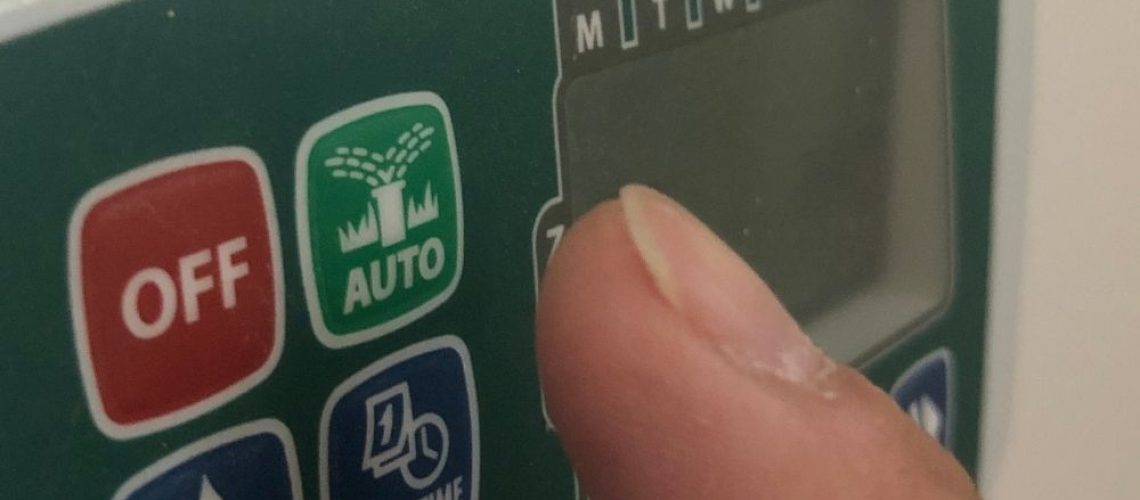The temperatures are finally dropping in North Texas and that means it is time to turn down our sprinkler controllers and stop watering so much, but how much?
The summer in North Texas is hot and dry, so it’s easy to know that we need to water our yards, but it can be harder to determine in the fall and winter. Fall and winter weather in North Texas can be vastly different from year to year and even from one hour to the next. Knowing how much and when to water is important to maintain a healthy yard, even during the times when many plants are dormant. Here’s an easy guide on how much to water and a few methods to accomplish it.

For the fall and winter, you might not want to completely stop watering, but you do want to water way less.
Any time it is raining or freezing, turn it off completely.
Rain and freeze sensors on your sprinkler system are mandatory in most areas. City of Fort Worth residents can get a free one with their free sprinkler evaluation, if the system doesn’t have one.
How Much To Water
For a typical North Texas lawn of St. Augustine or Bermuda grass, follow our weekly watering advice to know how much to water each week throughout the entire year. This information is tailored to your location and weather, so it takes all of the guesswork out of how much to water and gives exactly what is needed with no work from you.
Most weeks during the fall and winter call for 0 inches of watering, except for particularly dry or warm times.

Water needs are determined by Evapotranspiration (ET), or the process by which water is transferred from the land to the atmosphere by evaporation from the soil and other surfaces and by transpiration from plants. The table below show recommended inches of water per week for different types of plants for Tarrant County based on average weekly ET. Fall is highlighted in orange and winter in blue. These baseline amounts are reduced based on any rainfall and adjusted for weather conditions.

Besides September, which can often still be fairly warm, all of the fall and winter months show little watering needed per week, and these needs are easily reduced to zero with any significant amount of rainfall.
If you have a newer sprinkler controller, you may have the seasonal adjust option. In this case, you can use that feature to adjust the amount you normally water to less for cooler seasons. In the fall, adjust to 30-50%, depending on how warm it still is and how much rain has been falling. For winter, adjust down further, to 0-10%.
If you don’t have the seasonal adjust feature, you can still adjust down by a percentage, just do it manually by reducing each zone’s minutes.

Again, if it is raining or freezing, turn off the controller completely.
During the winter, if you have dormant perennials they will still need a bit of water, but not much. Particularly if they are native plants and have no current aboveground vegetation, only water them when the soil dries out and don’t soak them when you do water.
Often times, Bermuda grass also needs little to no water in the winter.
Since your sprinkler system is not in as much use, winter is a perfect time to evaluate your sprinkler system to check for leaks or problem heads. Sign up for a free sprinkler evaluation from a licensed irrigator on STW.com year round!



